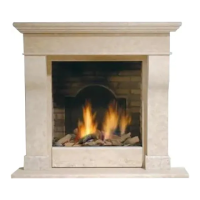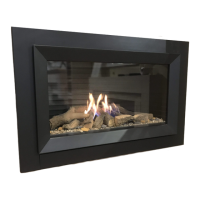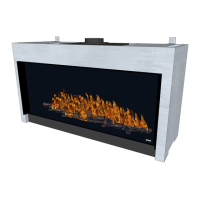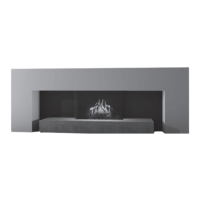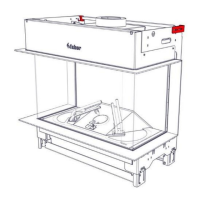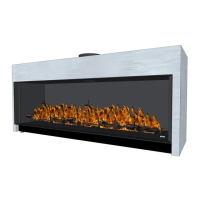5 < < < <
UK IRL
2 Installation requirements
Note: Since the appliance is a source of heat, circulation of air occurs. Therefore it is of
importance that you do not use the appliance shortly after a renovation of the home.
Because of the natural circulation of air, moist and volatile components from paint,
building materials, carpet etc. will be attracted. These components can settle onto cold
surfaces in the form of soot.
As on all heat producing appliances, soft furnishings such as blown vinyl wallpaper placed
too near to the appliance may become scorched or discoloured. This should be born in
mind when installing the appliance.
2.1 Flue requirements
• The appliance is of the type C31. The appliance will need to be supplied with the
approved flue pipes and terminal, it is not possible to supply your own
• a horizontal extension with elbows is allowed for a maximum of 6 meters
(depending on the situation)
• Vertical flue routing between 0.5 – 12 meter (depending on situation)
Determine on the base of the example calculations in Appendix A and on the base of the
table in Appendix B if the desired situation is possible. To establish this you will need to
calculate:
• The effective height (this is the real difference in height between the upper side of
the appliance and the terminal)
• The total horizontal extension. This is the total horizontal flue length where:
1. each elbow, which is in the horizontal area, counts for 2 meters
2. each 90-degree bend, which is in the horizontal area, counts for 2 meter
3. each 45-degree bend, which is in the horizontal area, counts for 1 meter
4. elbows and bends at the transition of horizontal to vertically are not to be
counted
5. the wall mounted terminal counts for 1 meter
2.2 Flue restrictor
If applicable, in the table of appendix B is also stated the size of a flue restrictor. This
restrictor needs to be fitted in the combustion chamber when placing the appliance.
Normally the smallest flue restrictor is fitted at production.
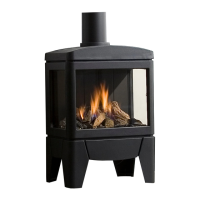
